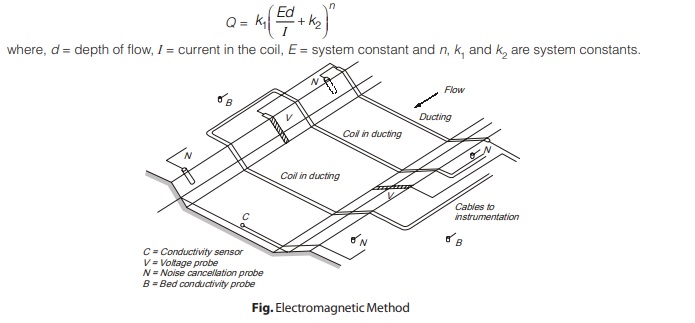Gauging site: What is a gauging point in hydrology?
Measuring the area of cross-section of river at selected section. Gauging site must be selected with case to ensure the stage-discharge curve is reasonably constant over a long time period.
The ideal gauge site should follow following criteria:
- The general cause of stream is straight for about 100 meter downstream and 100 meter upstream from the site.
- The stream should not be braided at the gauge site and all the flow must be confined to single stream at all stage.
- The stream bed should not be subjected to scour deposition of silt at the site.
- The stream should be free from weed at the site.
- Banks should be high enough to contain flood water.
- The river should have a well-defined cross-section which should not change in various seasons.
- It should be easily accessible throughout the year.
- The gauging site should be free from backwater effects in the channel.
Electromagnetic Method
This method is based on the Faraday’s principle, according to this, an emf is induced in the conductor when it cuts normal magnetic field. To produce the magnetic field, large coils are buried in the bottom of channel which carry current I, to produce a controlled vertical magnetic field. We provide the electrodes at the side of channel to measure the voltage produced due to flow of water, the discharge of system can be calculated by

These instrument can measure the discharge to an accuracy of 3%. The minimum detectable velocity is 0.005 m/s.
<< Previous | Next >>
Must Read: What is Hydrology in Civil Engineering?


